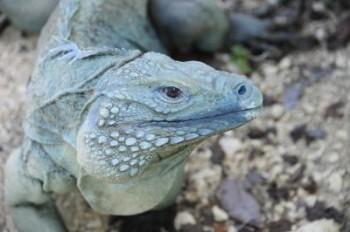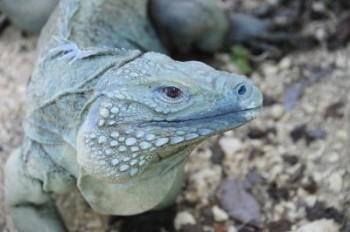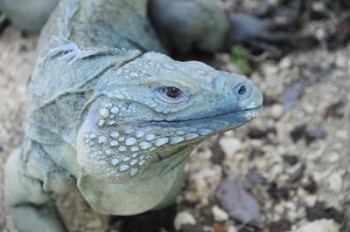Grand Cayman Blue Iguana Saved From Extinction
In a rare good news story, the once near extinct Grand Cayman blue iguana is making a comeback that has experts hoping for a complete recovery of the endangered species.

Ranging between gray and turquoise blue in color, male iguanas become bluer during the mating season. Julie Larsen Maher/Wildlife Conservation Society
|Updated:





